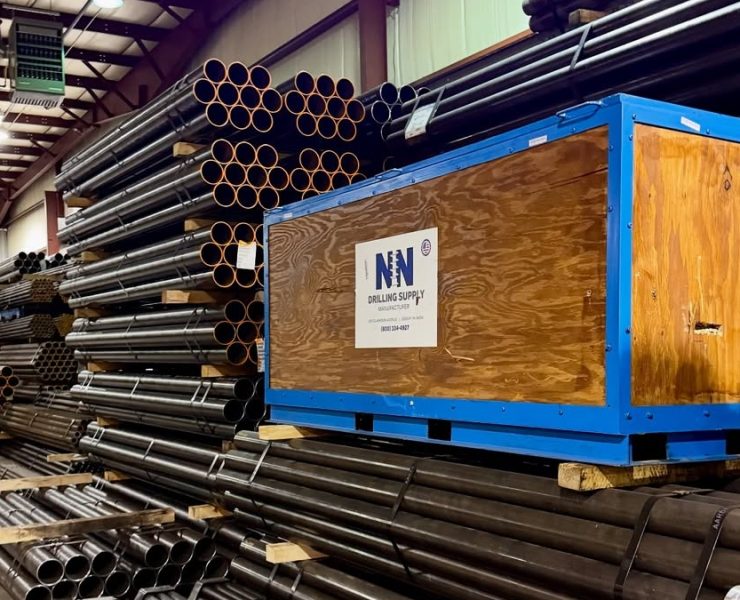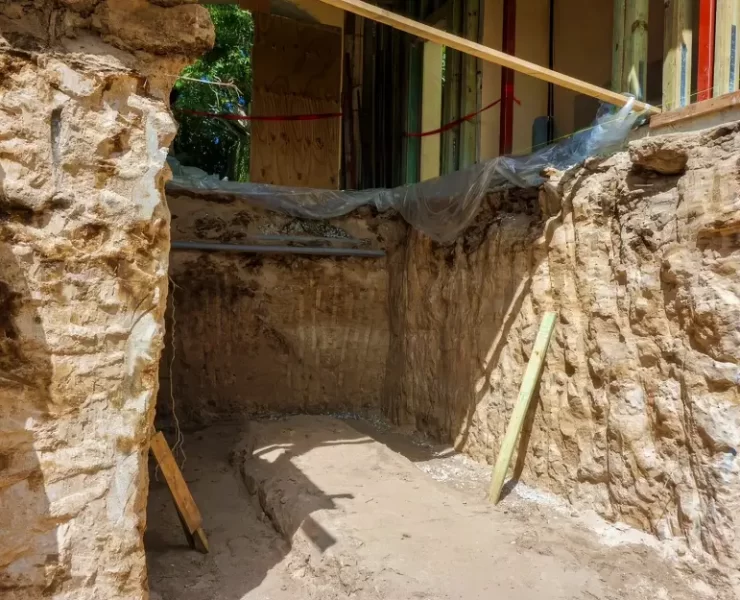Pile Driving Part IV: Introduction to the Pile Capacity and Driveability
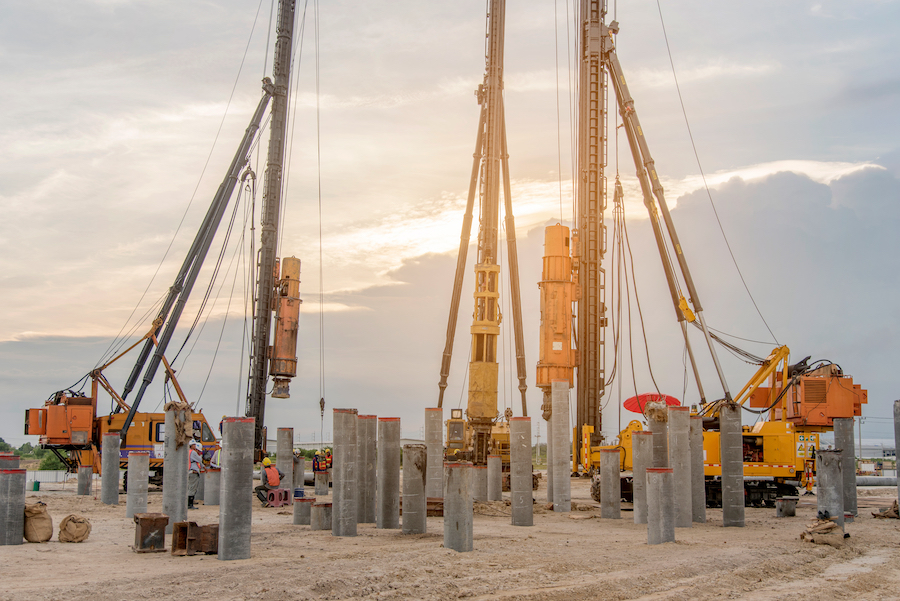
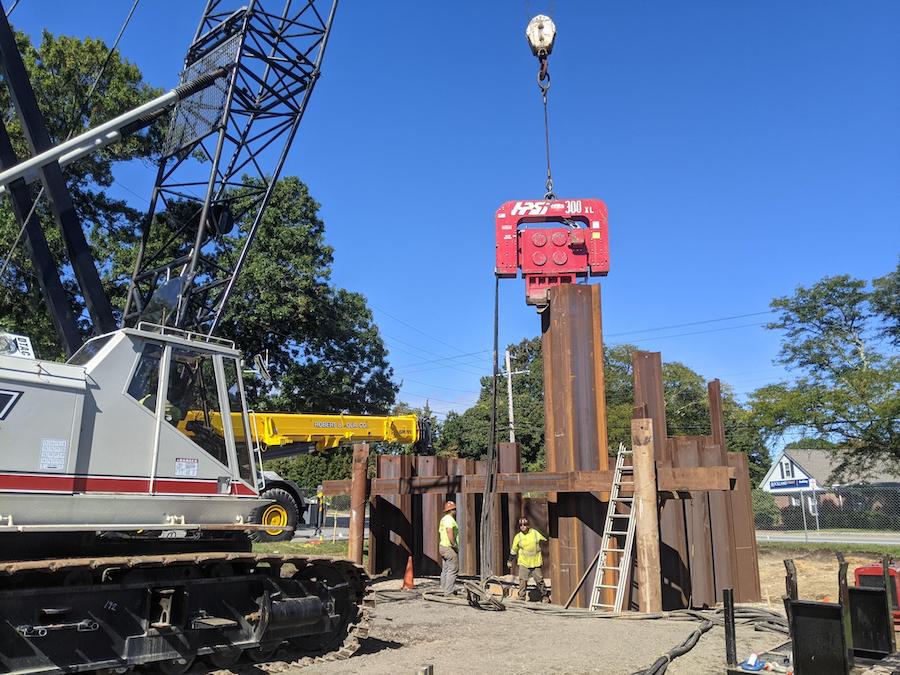
View the complete article here.
The ultimate objective of any foundation is to transfer load from a structure to the soil below it. The foundation must do this while neither overstressing the soil to failure nor compromising its own structural integrity. In the case of driven piles, the impact method of installation adds the requirement that the pile not be overstressed during driving as well. The goal of the designer is to achieve all of these objectives in an economical fashion.
General Considerations for Foundation Selection
A foundation is the interfacing element between the superstructure and the underlying soil or rock. The loads transmitted from the superstructure to the underlying soil must not cause soil bearing failure or damaging settlement. It is essential to systematically consider various foundation types and to select the optimum alternative based on the superstructure and the subsurface conditions.
The following design approach should be used to determine the optimum foundation alternative:
- Determine the foundation loads to be supported and special requirements such as limits on total and differential settlements, lateral loads, scour, and time constraints on construction.
- Evaluate the subsurface investigation and the laboratory testing data of the soils or rocks. Ideally, the subsurface investigation and laboratory testing were performed based on the designer’s knowledge of the loading and performance requirements.
- Prepare a “design” soil profile and critical cross sections. Determine soil layers suitable or unsuitable for spread footings or pile foundations.
- Consider foundation alternatives and prepare preliminary technically feasible designs.
- Prepare cost estimates for feasible alternative designs including all associated substructure costs.
- Select the optimum alternative. Generally, the most economical alternative should be selected and recommended. The ability of the local construction force and availability of materials and equipment should be considered. Other factor such as speed of construction, adjacent properties, and environmental variables may influence the final selection.
Establishment Of a Need for A Deep Foundation
The first difficult problem facing the foundation designer is to establish whether or not the site conditions dictate that a deep foundation must be used. The following are situations where a deep foundation may be needed:
Upper Soil Strata Too Compressible or Weak
The upper soil strata are too compressible or too weak to support heavy vertical loads. In this case, deep foundations transfer loads to a deeper dense stratum and act as toe bearing foundations. In the absence of a dense stratum within a reasonable depth, the loads must be gradually transferred, mainly through soil resistance along shaft. An important point to remember is that deep foundations transfer load through unsuitable layers to suitable layers. The foundation designer must define at what depth suitable soil layers begin in the soil profile.
Shallow Footings Insufficient
Deep foundations are frequently needed because of the relative inability of shallow footings to resist inclined, lateral, or uplift loads and overturning moments. Deep foundations resist uplift loads by shaft resistance. Lateral loads are resisted either by vertical deep foundations in bending, or by groups of vertical and battered foundations, which combine the axial and lateral resistances of all deep foundations in the group. Lateral loads from overhead highway signs and noise walls may also be resisted by groups of deep foundations.
Scour Around Footings
Deep foundations are often required when scour around footings could cause loss of bearing capacity at shallow depths. In this case the deep foundations must extend below the depth of scour and develop the full capacity in the support zone below the level of expected scour. The geotechnical analysis of bridge foundations should be performed on the basis that all stream bed materials in the scour prism have been removed and are not available for bearing or lateral support. Costly damage and the need for future underpinning can be avoided by properly designing for scour conditions.
Soils Subject to Liquefaction
Soils subject to liquefaction in a seismic event may also dictate that a deep foundation be used. Seismic events can induce significant lateral loads to deep foundations. During a seismic event, liquefaction susceptible soils offer less lateral resistance as well as reduced shaft resistance to a deep foundation. Liquefaction effects on deep foundation performance must be considered for deep foundations in seismic areas.
To Protect Bridge Piers from Vessel Impact
Deep foundations are often used as fender systems to protect bridge piers from vessel impact. Fender system sizes and group configurations vary depending upon the magnitude of vessel impact forces to be resisted. In some cases, vessel impact loads must be resisted by the bridge pier foundation elements. Single deep foundations may also be used to support navigation aids.
To Support Adjacent Structures
Deep foundations may be needed to support structures adjacent to locations where future excavations are planned or could occur. This is often the case in urban areas. Use of shallow foundations in these situations could require future underpinning in conjunction with adjacent construction.
Expansive or Collapsible Soils
Deep foundations are used in areas of expansive or collapsible soils to resist undesirable seasonal movements of the foundations. Deep foundations under such conditions are designed to transfer foundation loads, including uplift or down drag, to a level unaffected by seasonal moisture movements.
Foundation Alternatives
In many instances either a shallow or deep foundation alternative is technically feasible. Under these circumstances, an evaluation of the shallow foundation should include:
- The dimensions and depth of shallow footings based on allowable bearing capacity.
- The magnitude and time-rate of settlement under anticipated loads.
- Detailed cost analysis including such factors as need for cofferdams, overall substructure cost, dewatering and foundation seals, construction time, construction risk, and claims potential.
A comparative analysis of feasible deep foundation alternatives should also be made. The cost analyses of feasible alternatives should have a significant role in the final selection of the foundation type.
Basic Load Transfer Concepts for Pile Foundations
Pile groups of a foundation should be proportioned to permit only an acceptable amount of settlement in support of the maximum combination of loads. This includes, but is not limited to:
- All dead loads, including the weight of the pile cap and any load thereon. Where consolidating soils overlie the bearing strata, consideration must be given to possible down drag, or negative shaft friction.
- The live load factored as may be permitted by the applicable building code.
- Lateral force and moment reactions, including the effect of eccentricity, if any, between the column load and the load-bearing center of the pile group.
- Vessel impact loads.
- Uplift and overturning due to wind and hydrostatic loads.
- Seismic loads.
- Ice loads.
- Loads from moving machinery and traffic vibration.
The allowable load from pile to soil should be determined by a recognized method of analysis. This will include an evaluation of three basic limit states or potential failure modes including:
- Failure of the pile itself (structural capacity).
- Failure of the soil surrounding the pile shaft and under the pile toe (geotechnical capacity).
- Failure of the pile during driving (installation stresses).
Piles must penetrate or bear on acceptable material a sufficient distance to develop the required geotechnical capacity. They must be driven either plumb or to the batter specified. The toe of the pile should be protected from damage during installation. Damaged or broken piles should neither be used nor accepted for payment.
Static Load Capacity
The static load capacity of a pile can be defined as the capacity of the ground to support the loads on the pile imposed by the structure. A static analysis is performed to determine the static load capacity (ultimate and allowable capacities) of individual piles and of pile groups.
Static Pile Capacity Computations
Static pile capacity computations are necessary to estimate the number of piles and the required pile lengths both for the design of substructure elements and for ordering piles of the correct length from the supplier. The ultimate static load capacity of an individual pile and of a pile group is the smaller of the structural capacity of the pile(s), or the capacity of surrounding medium to support the loads being transferred to it from the pile(s).
Static Load Tests
Static load tests can also be used to determine pile load capacity. Because load tests are expensive and time consuming, they cannot always be economically justified. Alternatives to static tests include dynamic tests, Osterberg cells, or Statnamic™ tests. The designer should carefully evaluate the appropriateness and correct interpretation procedures of the latter two tests.
Two Static Analyses
Sometimes, two static analyses are required for a design. First, it is necessary to determine the number and length of piles necessary to support the design loads. The second analysis is performed to determine the total driving resistance the pile will encounter which helps in determining the necessary capability of the driving equipment.
Overburden Pressure
Effective overburden pressure at a given depth below ground is the stress at that depth due to the soil weight above.
Bearing Capacity of Piles on Rock
Pile foundations on rock are normally designed to carry large loads. For pile foundations which are driven to rock, which include steel H-piles, pipe piles or precast concrete piles, the exact area of contact with rock, the depth of penetration into rock as well as the quality of rock are largely unknown. Therefore, the determination of load capacity of driven piles on rock should be made based on driving observations.
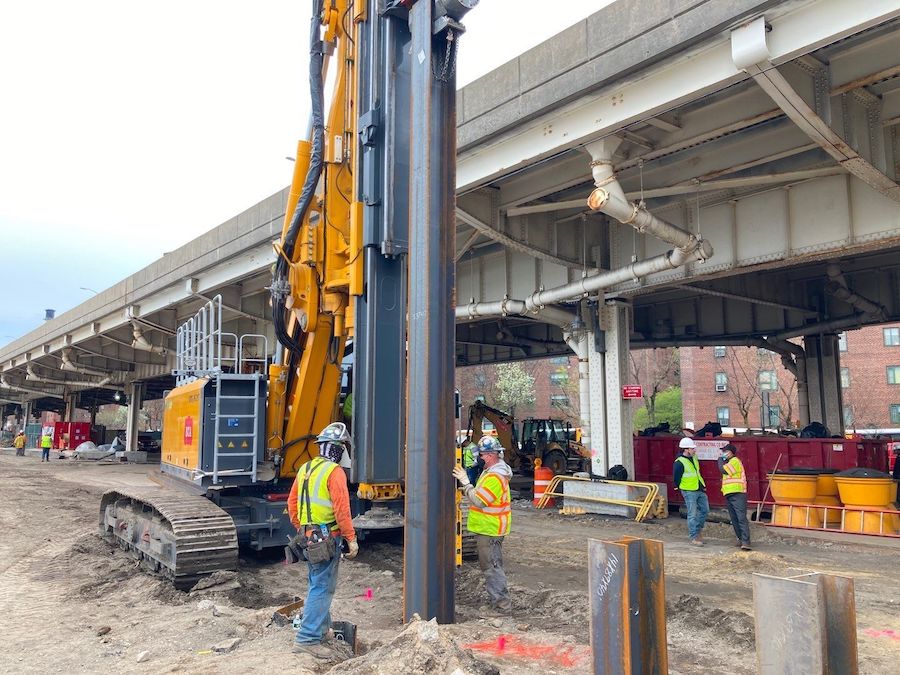
Rock Quality
For end bearing piles on rock of fair to excellent quality, the structural load capacity of the piles – based on allowable (design) stress for pile material – will generally be lower than the capacity of rock to support loads. Therefore, small diameter piles supported on fair to excellent quality rock may be loaded to their allowable structural capacity. Piles supported on soft weathered rock, such as shale or other types of very poor or poor quality, should be designed based on the results of pile load tests.
Conclusion
Because of the considerable influence of construction procedures on the behavior of pile foundations, the methods described in this article lead to successful designs of deep foundations only if adequate construction monitoring techniques are used. Inspection considerations should be an integral part of the design and construction of any foundation. Load tests, wave equation analysis, or dynamic monitoring for construction control and monitoring should be used to check the validity of the static design.
View the complete article here.
What is Static Load Capacity?
The static load capacity of a pile is the capacity of the ground to support the loads on the pile imposed by the structure. A static analysis is performed to determine the static load capacity (ultimate and allowable capacities) of individual piles and of pile groups.
Why do you compute Static Pile Capacity?
Static pile capacity computations are necessary to estimate the number of piles and the required pile lengths both for the design of substructure elements and for ordering piles of the correct length from the supplier. The ultimate static load capacity of an individual pile and of a pile group is the smaller of the structural capacity of the pile(s), or the capacity of surrounding medium to support the loads being transferred to it from the pile(s).
















